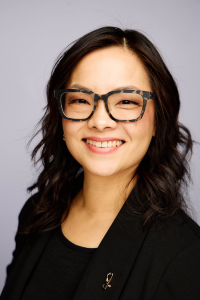Healing Hands: A Legacy of Care from Taiwan
Published June 03, 2025
Inside OME

By May Lin, DO, TUCOM, Taiwanese American Osteopathic Family Medicine Physician in honor of her Ba, the late Ming I Lin—who gave the gift of generosity to all he knew—selfless and humble in every way he lived his life
“Hey Ba, (Dad) it happened again. GeGe (older brother) twisted his ankle playing basketball at the gym,” I reported in Taiwanese as a young girl letting my dad know that my brother was injured.
I watched my dad carefully observe my older brother as he limped into the bedroom, plopping himself on the couch while I pulled up a stool to elevate my brother’s leg. This happened often and we all knew the routine.
“Ba” would signal to me to get the brown herbal medicine paste that my aunt gifted us the last time she visited the states. I recall my aunt telling the story about how she hand made the medicine. It was a labor of love; days of work poured into the making of this secret family medicinal remedy nicely packaged in a round unlabeled container. I imagined plants being harvested, chopped and processed to extract their healing essence and hours of boiling and stirring before a viscous brown goo emerged.
The herbal medicine had a strong smell and my dad would systematically check my brother’s ankle, looking for signs of swelling. He manually examined specific landmarks and asked my brother to move his ankle, foot and toes before straightening and tugging on the injured foot. The brown herbal paste would be plastered on the ankle while the ace bandage was wrapped around the injury. My brother would be back to basketball in no time.
Years later, as a practicing osteopathic physician, I would observe patients as they enter the exam room—watching their gait, ambulation and ability to bear weight. It would be routine to welcome and comfort a limping patient and to pull out the extension on the exam table to prop up the foot, sometimes using a pillow.
We would test range of motion—first by observing what the patient could do on their own (testing passive range of motion) and then taking steps to gently assess how the body would react as the clinician examined the foot in all the planes of motion.
Thanks to years of medical training and learning from patients and physician mentors, my hands naturally positioned themselves to be an instrument of diagnosis to guide and assess for tenderness, asymmetry, restriction of motion edema and tissue texture change.
I would give words of reassurance to a worried patient or surrounding friends or family members by verbally communicating findings—an important part of the patient’s path to healing. As this is happening, my head and hands are checking off the components of the Ottawa Ankle Rules, looking for point tenderness wondering if imaging would be indicated.
As an osteopathic physician, after the red flags are ruled out—I could focus on how to give the patient immediate relief. I assess for areas of pain and restriction based on foundational principles of the osteopathic tenets—structure and function. Anatomy and physiology. Bone. Muscle. Tendon. Ligament. Fascia. Blood circulation. Lymphatic circulation. Nerves that signal pain or give clues to injury. It is all interconnected.
I do not know the mechanism of action or pharmacologic half-life of Taiwanese herbal medicine. What is clear is that compassionate care for hurting people is a universal language all humans understand. Using one’s hands to assess structures while encouraging motion to maximize physiological function can be communicated across all cultures.
During this Asian American and Pacific Islander (AAPI) Heritage Month I am proud to share how my father used the traditions of our family heritage to model how to care for the sick. I have reached to these roots to embrace the healing art of osteopathic medicine—showing up for hurting people by active listening with all senses—including helping hands and honoring the body’s innate capacity to heal.
